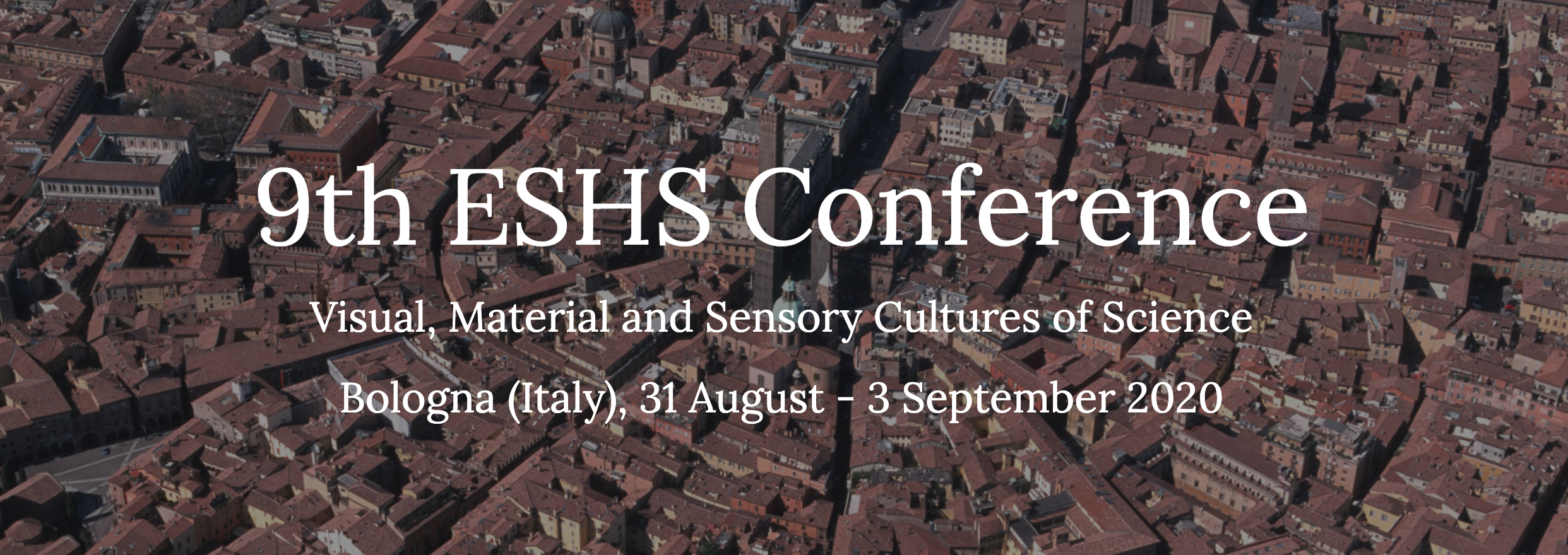Visual, Material and Sensory Cultures of Science as a Crossroad Between Histories of Displays and Displays of Histories -1. Exhibitions and Teaching
Comunicación: Carmen López-San Segundo y Francisco Javier Frutos-Esteban
Fecha: 3 septiembre 2020
Título: «Linternauta: A Web Application for the Interpretation of Magic Lantern Slides as Sources of Scientific Culture»
Keywords: Magic Lantern Slides, Visual Heritage, Web Application.
Abstract: The public or private sessions of magic lantern slides that combined the projection of images, the recitation of texts and the interpretation of musical melodies reached an important sociocultural relevance at international level in different contexts related to science, education and popular culture between the 19th and 20th centuries. Although the magic lantern sessions developed a thriving equipment industry and satisfied a varied demand for consumer practices its study as an object of a scientific nature unfortunately has been outside of academic research until the late twentieth century.
The magic lantern sessions had as their central element the projection slides that habitually they were made of transparent glass illustrated since fables and tales as well as allegories, comedies, dissemination subjects or current events. Many institutions and private collectors hold magic lantern slides but cannot address the essential task of cataloguing them in order to disseminate their enormous heritage value. There are large numbers of magic lantern slides which are properly preserved, but often lack an optimal organization to establish their meaning and cultural significance. The dispersion of collections of magic lantern slides has been one of the main obstacles to producing a systematic study. The magic lantern slides are distributed among four major types of heritage institutions: private collections, archives, libraries and museums, each of which understands their value differently.
As part of the ‘Dynamics of Educational and Scientific Renovation in Secondary Schools Classrooms (1900-1936): An Iberian Perspective’ and ‘A Million Pictures: Magic Lantern Slide Heritage as Artefacts in the Common European History of Learning’ research projects, the University of Salamanca investigators carried out an exploratory study of 198 Spanish magic lantern slide sets.This was a content analysis with the objective of classifying the slides according to discursive genre, intended to open up the neglected and extensive visual heritage of the magic lantern and to provide guidelines for making magic lantern slides available as historical sources for research into scientific culture. This exploratory study brought to develop a controlled vocabulary that facilitates the classification of magic lantern and a web application – Linternauta that helps with the interpretation of Spanish magic lantern slide collections.
ABSTRACT OF THE THREE SYMPOSIUM’S SESSIONS
Material culture of science and the importance ascribed to the associated objects brought scientific museums and collections to be a major focus of interest for historical studies on science and technology. Recent approaches include the reconstruction of the study of historical laboratories and cabinets (Blondel, 1994; Sibum,1995, 2016; Boudia 2008), the exploration of the “object trajectories” and “biographies” (Daston, 2000; Bennet, 2005). On the other hand, museum studies investigated the relationship between the construction of museums and the establishment of scientific disciplines (Lourenco, 2018) or challenged the supposed neutrality and impartiality of museum exhibitions (Macdonald, 1998; Lynch & Alberti, 2010).
The Symposium aims at widening this panorama by exploring how scientific museums and collections embed the visual, material and sensory cultures of Science. In particular, three main aspects will be investigated:
- How the different cultures of Science contribute to renew the way museums display scientific knowledge to the public and to what extent museums can express the different cultures developed within the history of science field?
- How the history of the way scientific knowledge was displayed in museums and collections affected visual, material and Sensory cultures of Science. What kind of new historical researches can be fostered by looking at the museum as an “historical object in itself”, with a multilayered, stratified and inner evolution?
- How did museums mobilize visual, material and sensory cultures of science as to deal with social and political issues. How global histories of progress, race, political and religious beliefs have entered and shaped museum exhibitions?
The three research questions will be explored in relation to historical exhibitions, future exhibitions and to the partnership between exhibitions and teaching. Each session foresees the participation of historians of science and museum professionals and is balanced between theoretical contributions and specific case studies.
REFERENCES
- Bennet, J. (2005) ‘Museums and the History of Science: Practitioner’s Postscript’, Isis 96 (4): 602-608
- Boudia, S. (2008). ‘The curie laboratory: Radioactivity and metrology’ in History and Technology, An International Journal, 13, (4): Science, Medicine and Industry: The Curie and Joliot-Curie Laboratories, pp. 249 – 265
- Blondel C., Dörries M. (1994). Restaging Coulomb, Usages, controverse et réplications autour de la balance de torsion, Biblioteca di Nuncius, Olschki
- Daston, L. (2000). ‘Biographies of Scientific Objects’, Chicago University Press.
- Lynch, B. T. and Alberti, S. (2010). ‘Legacies of prejudice: racism, co-production and radical trust in the museum’, Museum Management and Curatorship, 25 (1) : 13 -35
- Lourenço, M.C. (2019). ‘Reconciling the past and the present: The shared history of physicists and museums’, Annual Meeting of the German Physical Society (Munich, 17-22 March 2019
- Macdonald, S. (1998). ‘The Politics of Display: Museums, Science, Culture’, Psychology Press
- Sibum, O.(1995). ‘Reworking the Mechanical Value of Heat: Instruments of Precision and Gestures of Accuracy in Early Victorian England,’ Studies in History and Philosophy of Science 26: 73-106.
- Hjalmar Fors, Lawrence M Principe and Sibum, O., (2016). ‘From the Library to the Laboratory and Back Again: Experiment as a Tool for Historians of Science’. Ambix, 63(2): 85-97

